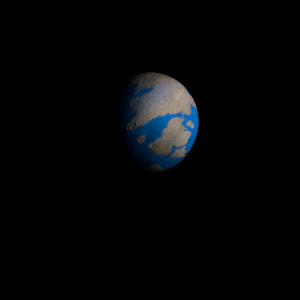|
|
Space Astro
|
Info for exoplanet "Negyoyu Nyaso"
| Scientific (actual) data |
|---|
| Name | K2-389 b |
| Planet status | Confirmed |
| Planet mass | 0.01778 |
| Radius | 0.19484 |
| Orbital period | 8.58404 |
| Semi major axis | 0.0762 |
| Discovered | 2022 |
| Updated | 2024-05-28 |
| Tzero tr | 2457740 |
| Impact parameter | 0.399 |
| K | 2.04 |
| Temperature (kelvin) | 1050 |
| Publication | Published in a refereed paper |
| Detection type | Primary Transit |
| Mass measurement type | Theoretical |
| Radius measurement type | Primary Transit |
| Star name | K2-389 |
| Right ascension | 355.63° |
| Declination | -9.71° |
| Mag v | 11.71 |
| Mag j | 10.51 |
| Mag h | 10.23 |
| Mag k | 10.18 |
| Star distance | 259.208 |
| Star metallicity | -0.034 |
| Star mass | 0.802 |
| Star radius | 1.084 |
| Star sp type | G2V |
| Star temperature | 5782 |
| Star alternate names | EPIC 245991048, TYC 5830-96-1 |
| Wikipedia article | K2-389 b |
Back
| |
| Fictional info (?) |
|---|
| Suggested name | Negyoyu Nyaso |
| Planet type | Hot planet |
| The smooth Borealis basin in the northern hemisphere covers 30 percent of the planet and may be a giant impact feature.
The two polar ice caps appear to be made largely of ice.
A prominent result is the "great brown spot", a giant storm that is known to have existed for centuries since it was first detected by scanner. |
| Atmosphere | Ozone | 71% |
| Ammonium hydrosulfide (NH4SH) | 15% |
| Hydrogen | 11% |
| Argon | 1.6% |
| Nitrogen | 0.34% |
| Sulfur dioxide | 1.2E-5% |
| Formaldehyde | 1.0E-6% |
| Atmospheric pressure | 0.3 bar |
 |
| No known satellites |
| Google search for Negyoyu nyaso |
|
Website by Joachim Michaelis
|
|
|
|